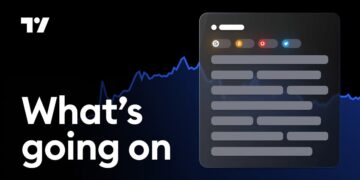(Reuters) -Chip behemoth Nvidia is closing the U.S. earnings season, as investors digest the appearance of the bond vigilantes in the usually rather sedate corner of long-term government debt.
Central banks in Australia, New Zealand and South Korea hold rate meetings as inflation data from around the globe provides evidence of the economic fallout from the tectonic shifts in U.S. trade policy.
Here’s your look at the week ahead from Dhara Ranasinghe, Sam Indyk and Sinead Cruise in London, Lewis Krauskopf in New York and Kevin Buckland in Tokyo.
1/ ENDING ON A CHIP Results from Nvidia – a behemoth in the artificial intelligence field that has become a sparring ground in global trade and geopolitics – are due on Wednesday and round out the Q1 U.S. reporting season.
Nvidia is part of the “Magnificent Seven” megacaps, whose shares have rebounded sharply since early April after a rough start to the year.
Its AI chips have helped catapult the company to become one of the world’s largest by market value and given it heft in world equity indexes. But after two years of massive gains, the stock’s performance has levelled off so far in 2025. Nvidia’s report could test the stock market rebound, with the S&P 500 approaching record highs after teetering on the brink of a bear market last month.
2/ HOME TO ROOST
It’s no surprise that government debt levels have surged given relentless pressure to raise spending on everything from defence to healthcare, aging populations and climate change.
But the consequences of governments not doing enough to improve their finances are coming home to roost.
Just days after the U.S. lost its top-notch triple-A credit rating with Moody’s, a $16 billion sale of 20-year U.S. Treasuries saw soft demand and Japan had its worst auction result since 2012 – sending 30-year government bond yields to record highs.
A corner of the bond market not known for its volatility – long-dated government bonds – has suddenly become a hot spot. In addition to surging Japan government bond yields, 30-year U.S. yields are back above 5%, dragging others higher.
Japan sells more long-dated debt in the days to come. Watch those auctions. The bond vigilantes are back.
3/ HANKERING TO HIKE
Unbowed by aggressive and unpredictable U.S. tariffs – or even the recent melt-up in bond yields – the Bank of Japan has kept a very calm demeanour in saying it plans to keep raising interest rates if prices gain in line with forecasts.
A surge in rice prices has driven upward momentum. The bellwether Tokyo consumer price index is due on May 30, frontrunning the nationwide reading by three weeks. Figures a month ago scaled a two-year high.
Australia’s inflation data on Wednesday will be watched after the central bank cut rates in May and signalled an openness to additional easing, with cooling prices giving policy makers room to do so.
New Zealand’s central bank is seen trimming the cash rate by another quarter point the same day. On Thursday, the Bank of Korea looks ready to cut amid concerns about growing economic headwinds.
4/ PRESSURE GAUGE
Inflation is returning to the top of policy makers’ agenda elsewhere too.
The Fed’s targeted inflation metric, Personal Consumption Expenditures, for April, due on May 30, could paint a clearer picture of the impact U.S. tariffs are having.
April was a volatile month after U.S. President Donald Trump’s tariff onslaught on April 2, but recent consumer and producer prices data have not flashed inflationary warning signs just yet.
Price pressures were clearly playing on the Fed’s collective minds when it kept rates steady this month, with a warning that the risk of higher inflation had increased, dampening expectations for near-term rate cuts.
The euro zone’s biggest economies – France and Germany – report consumer prices data on Tuesday and Friday, bloc-wide figures follow the week after.
5/ MEGA MAY
With fears for the U.S.’s massive debt pile quashing a relief rally in its assets, investors are planning how they might defend portfolios from more wild swings in the world’s largest economy. Top money managers at JPMorgan and Goldman Sachs are laying on more hedges to diffuse some of the hits to U.S. Treasuries and stocks. Others are using the dog days of May to sell down with greater conviction, diversifying exposures by pumping more money into Europe. European equity exchange-traded funds have pulled in 34 billion euros ($38.6 billion) of cash over the year to May 16 – four times the 8.2 billion euros put in U.S. equity funds, Morningstar data shows.
By comparison, in 2024, net flows into U.S. equity funds in Europe had dominated by a ratio of more than 8:1 over locally-focused products.
(Graphics by Pasit Kongkunakornkul, compiled by Karin Strohecker; Editing by Alex Richardson)

















